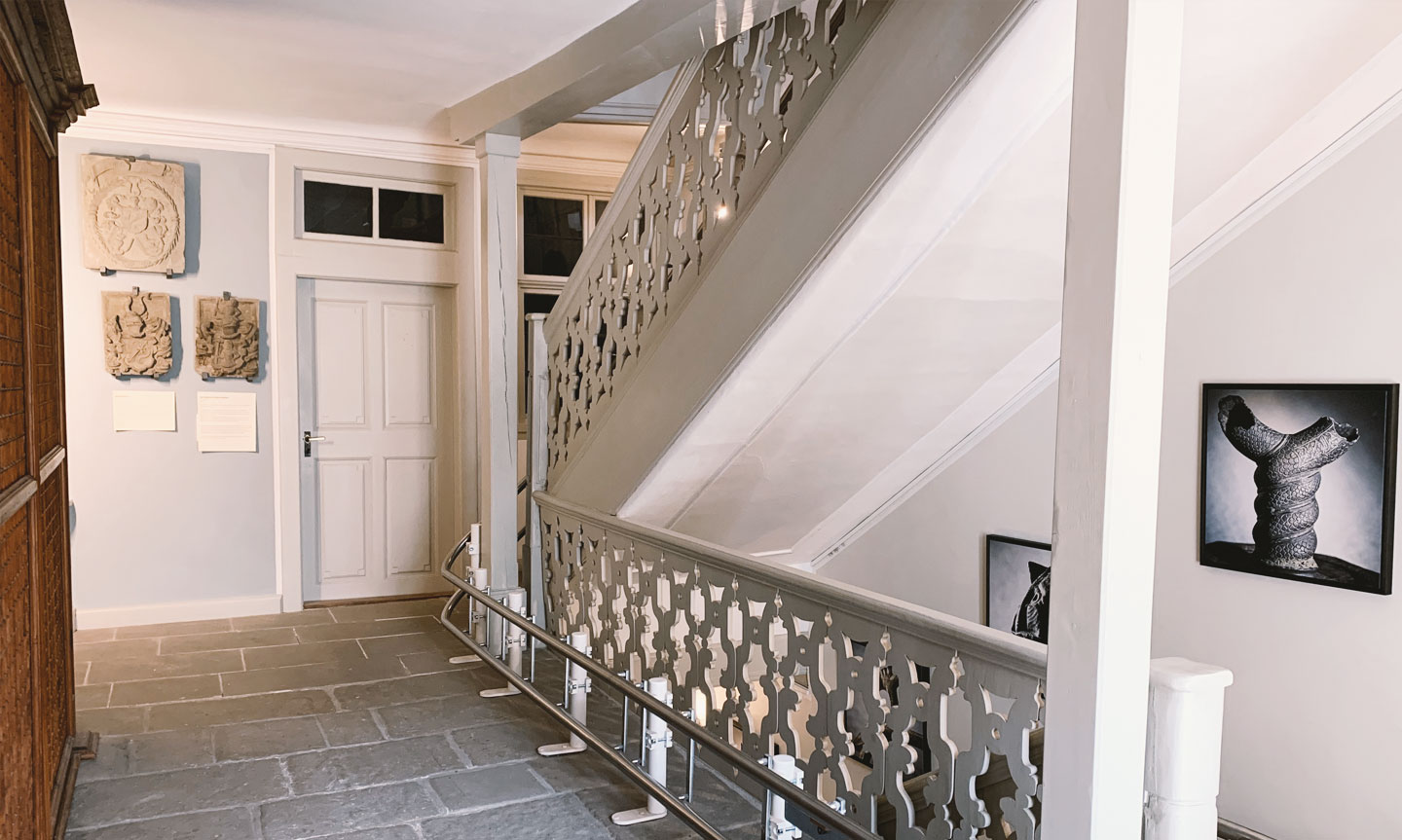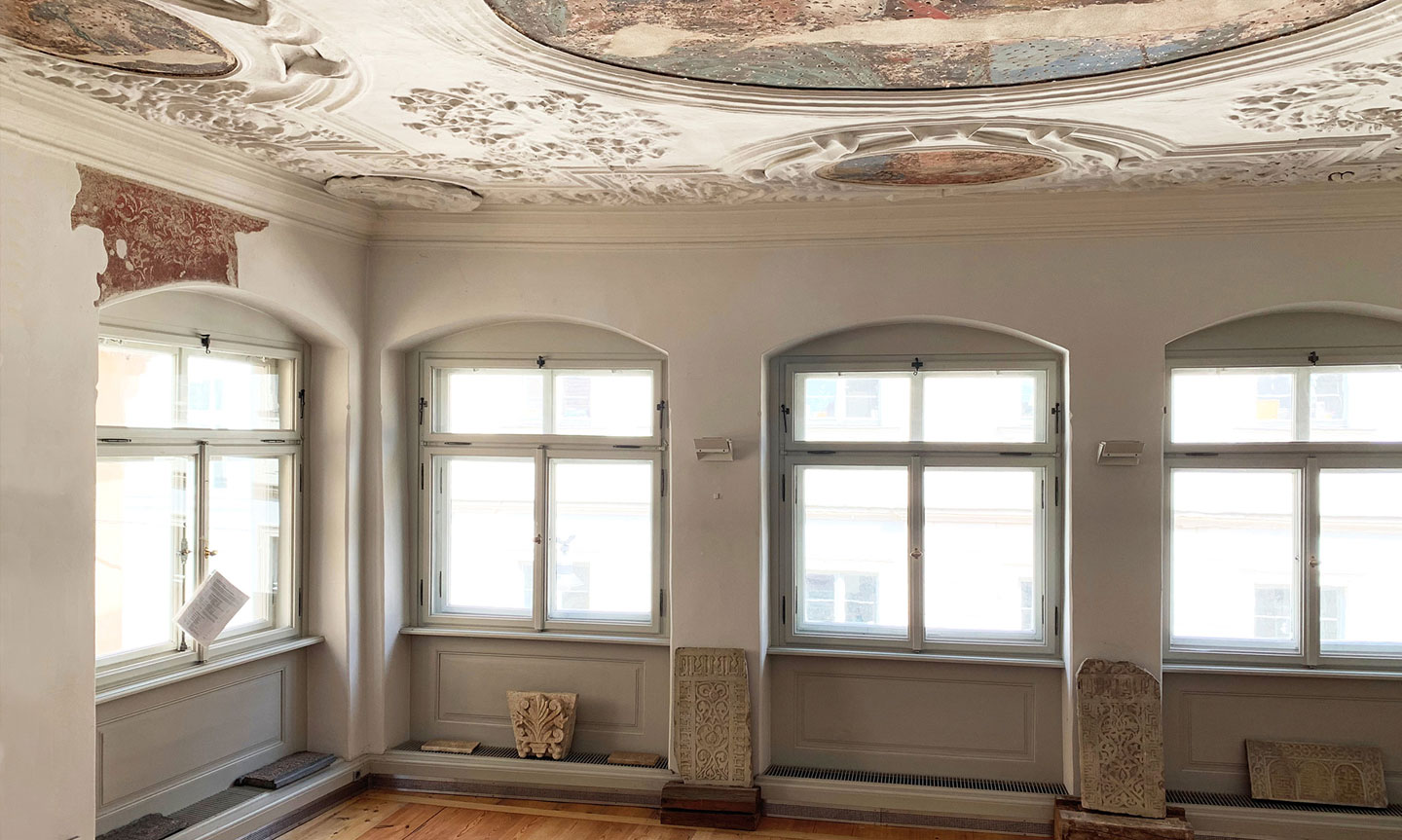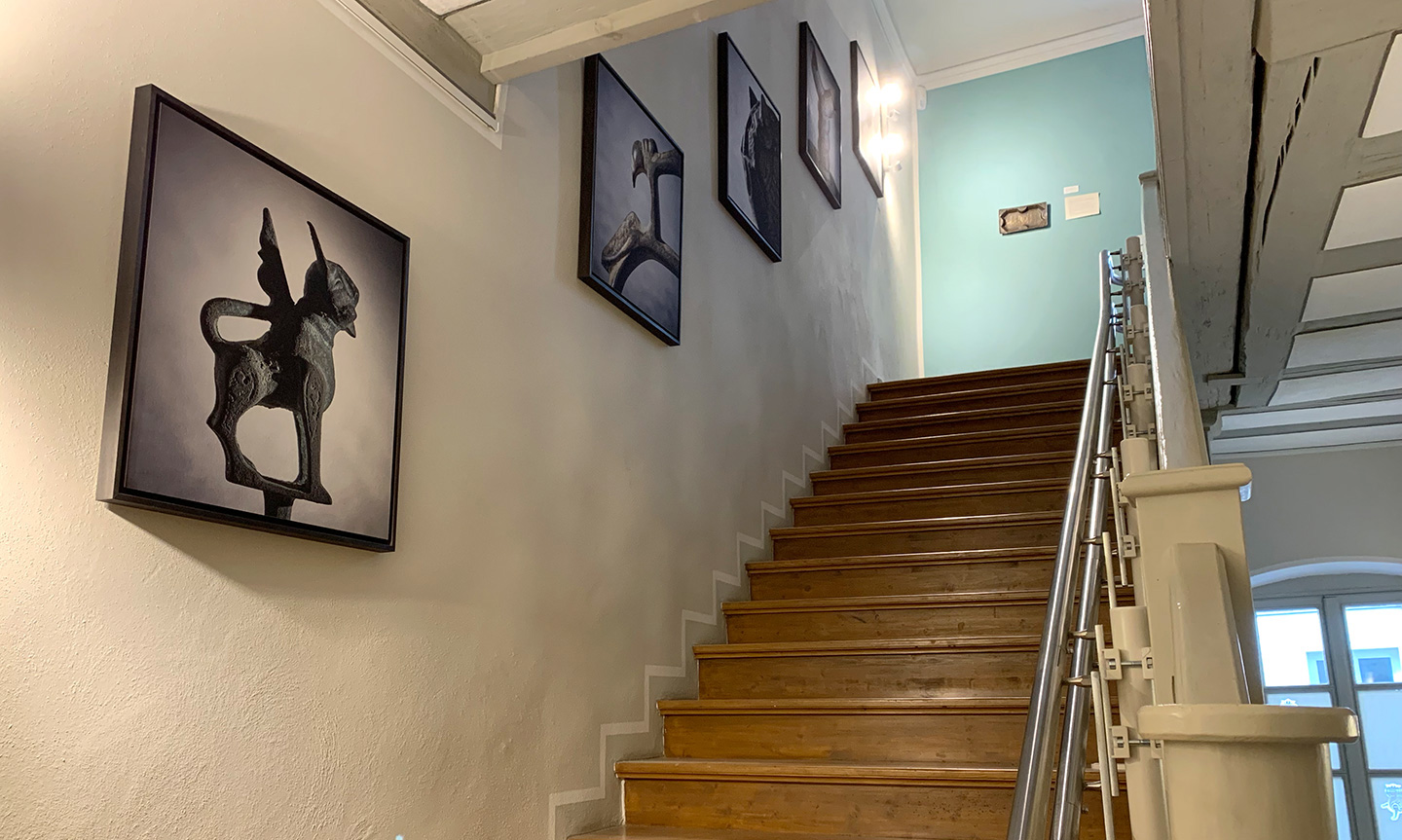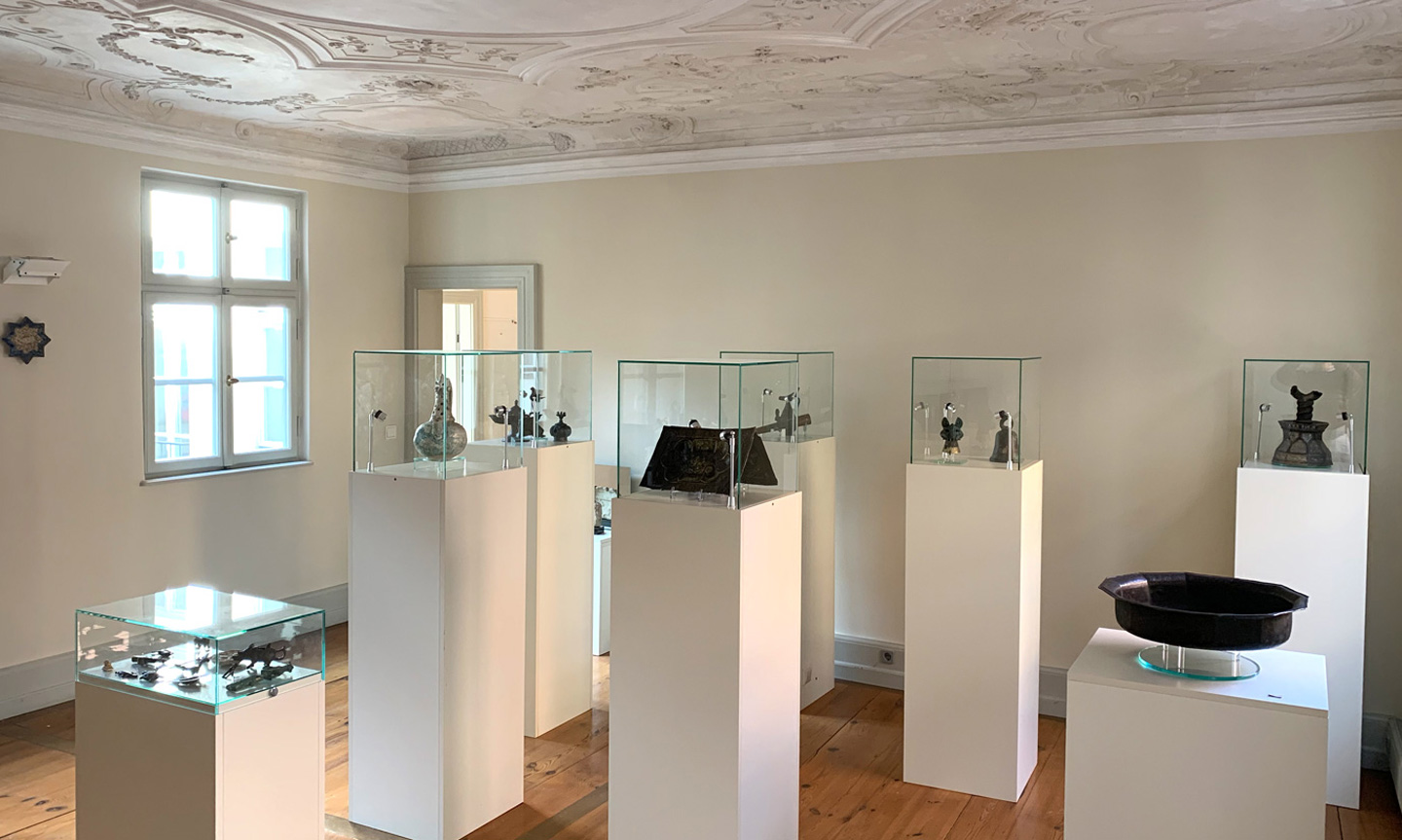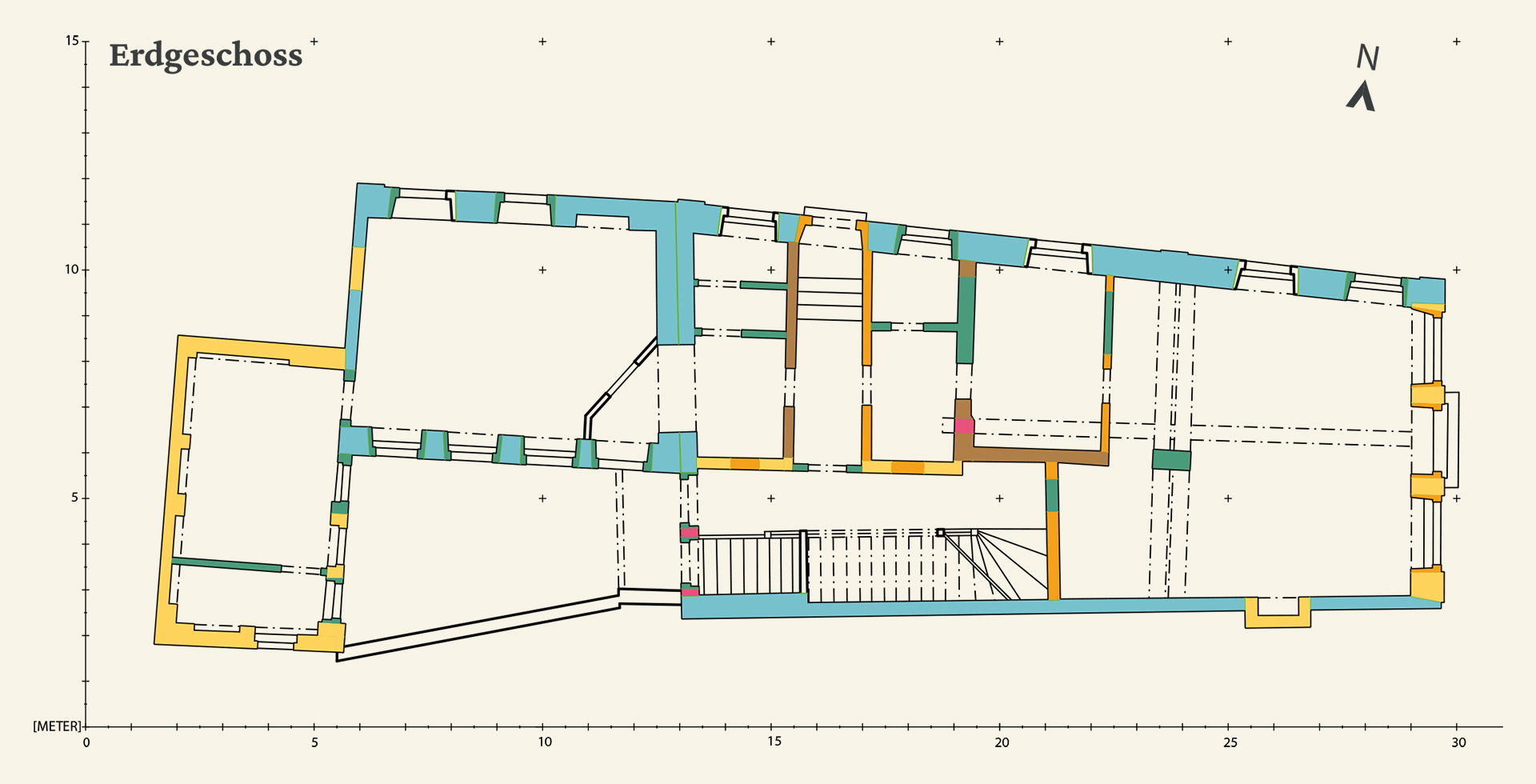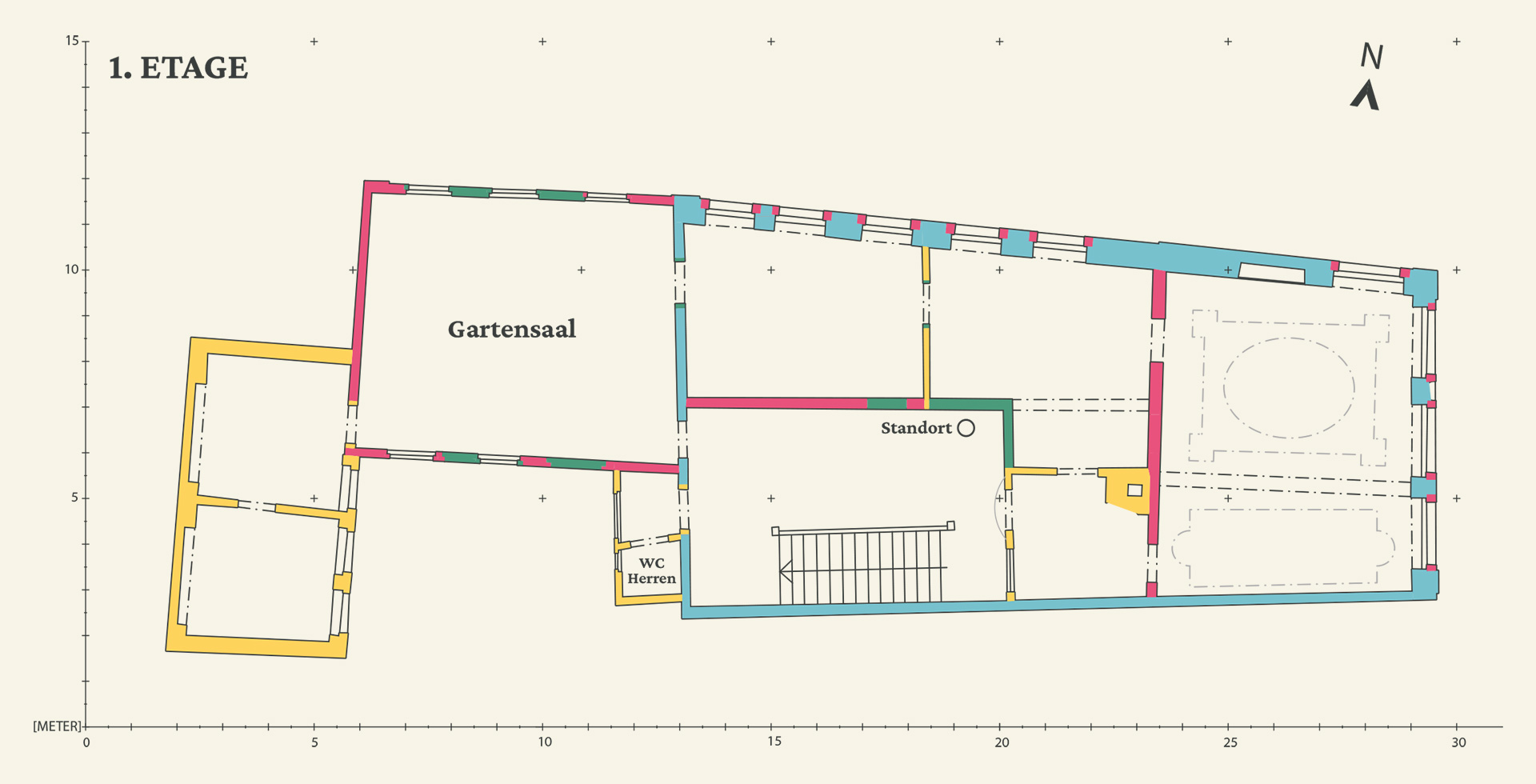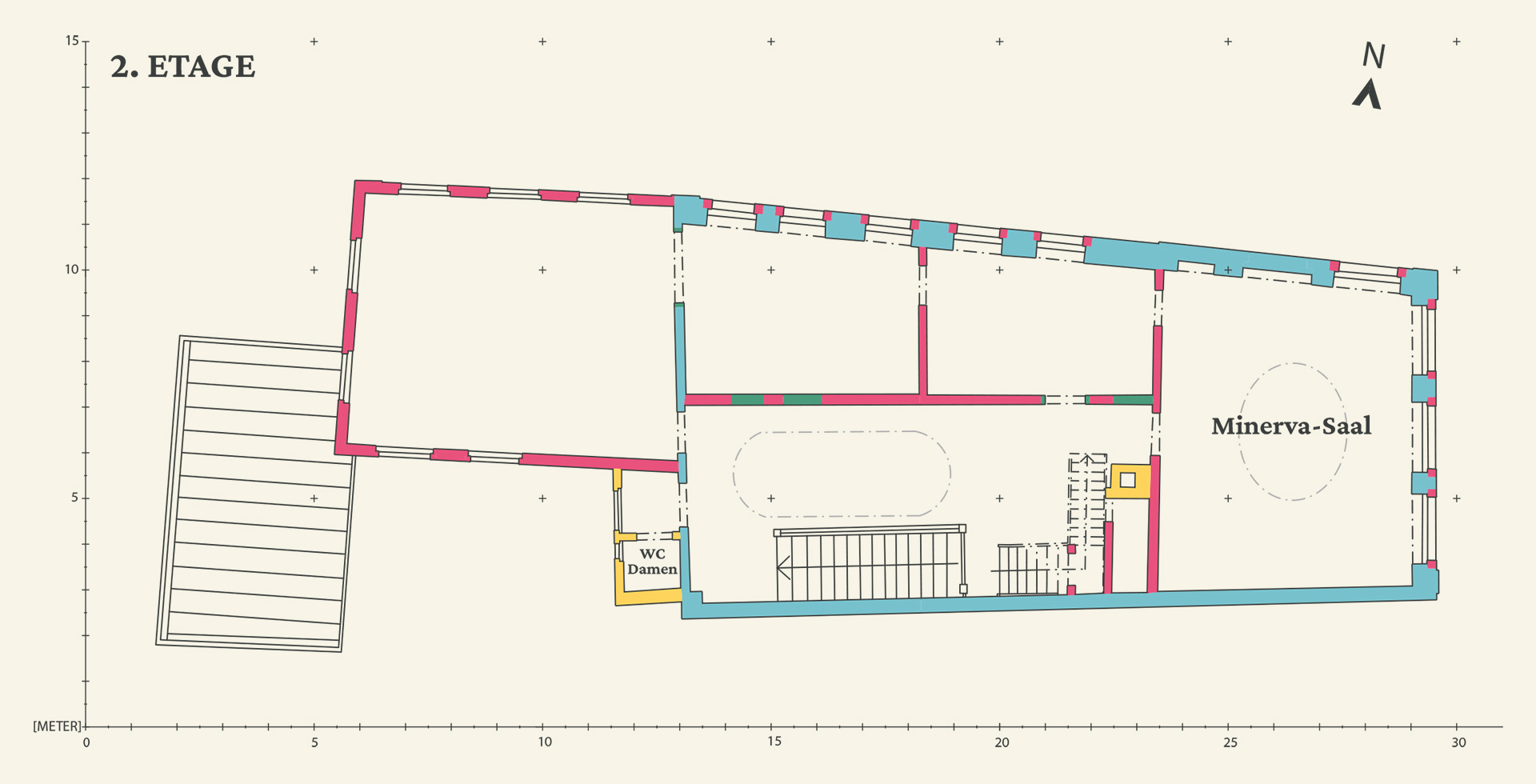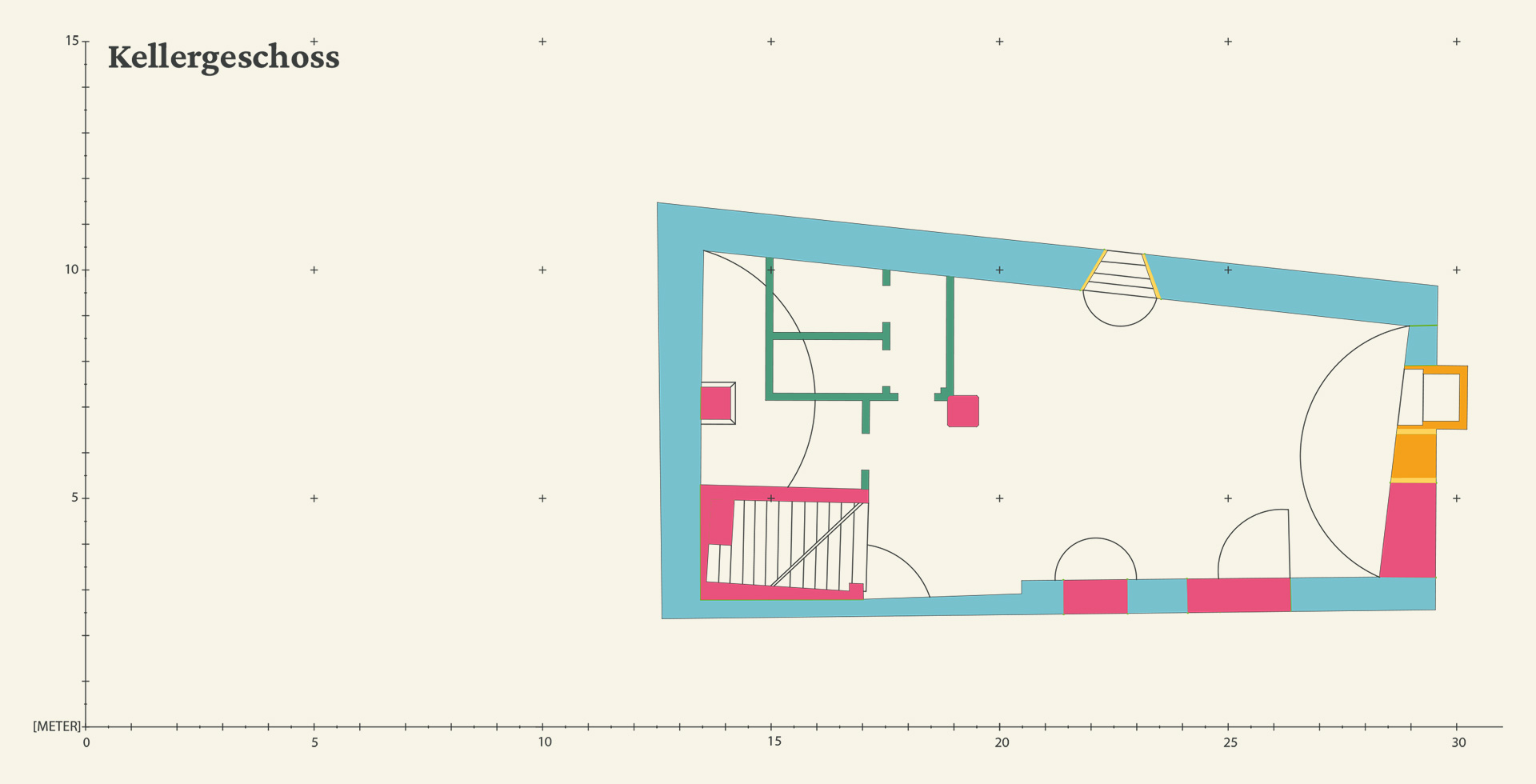House zum Benedikt
The Bumiller Collection is housed in a historic residential and commercial building in the heart of Bamberg’s old town, which has been a UNESCO World Heritage Site since 1993.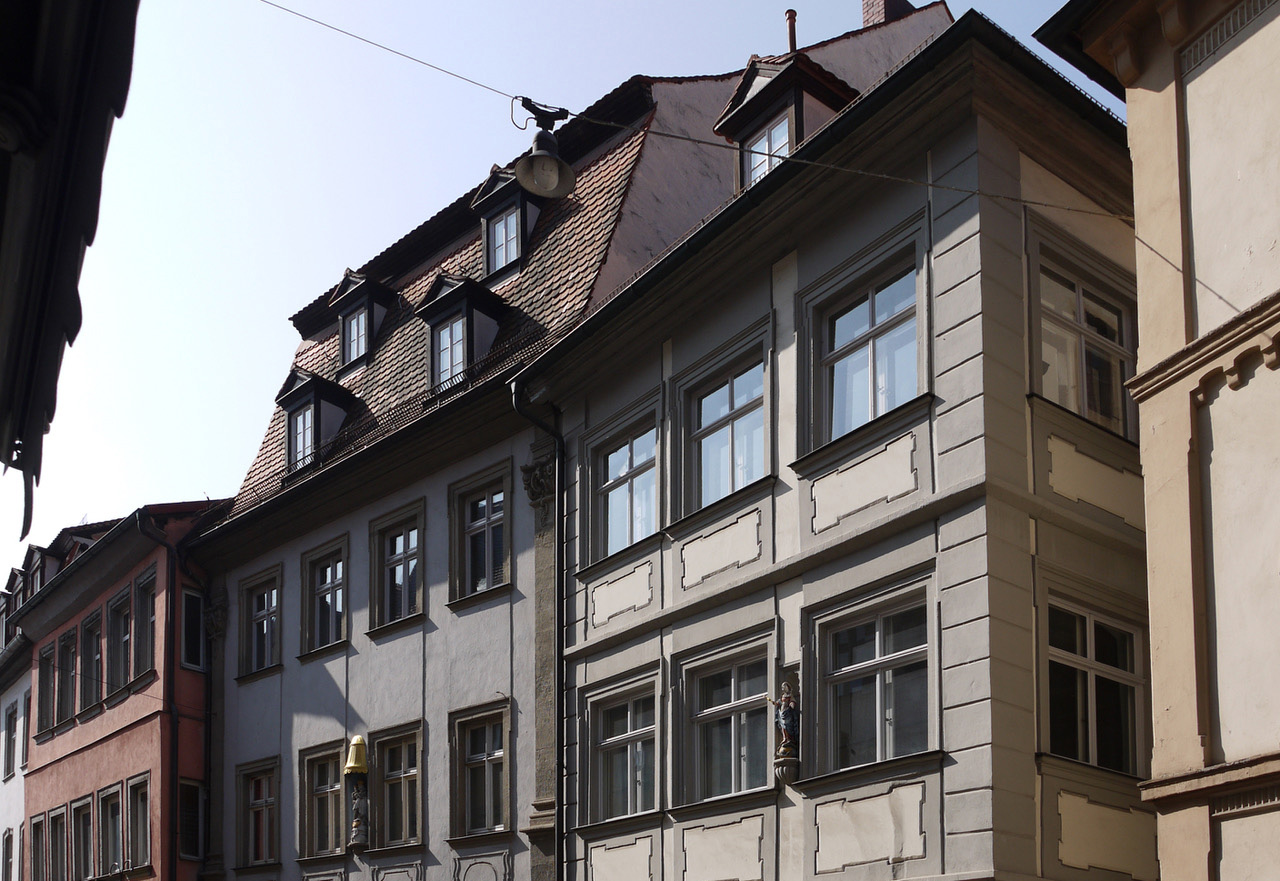
In 1992, Manfred Bumiller acquired the property at Austraße 29 and had it extensively renovated for two years in order to set up his Museum of Early Islamic Art. Since 1995, the “Haus zum Benedikt” can once again be experienced in its original state.
The first documented mention of a house on the site of today’s museum dates back to 1321. Only the floor of the cellar is probably medieval. The present building was completely destroyed by fire in 1584 and rebuilt by the town court clerk Johann Merzell. The stone plaques with the family coats of arms originally attached to the façade are now located in the stairwell on the first floor.
At the beginning of the 18th century, the building served as a residence for the court and chamber councillor Fortenbach and his family. This house was also refurbished in several phases during this period, when numerous buildings in Bamberg were renovated or their façades were baroqueized to “beautify the city”: The garden hall on the second floor and the banqueting hall on the second floor were given stucco ceilings by Johann Jakob Vogel in 1725 and around 1710 respectively.
Instead of the simple staircase, a representative staircase was installed and fitted with an elaborate stone floor. Cut-outs in the wall plaster show fragments of the paintings that were 18. and 19th century decorated the walls.
Around the middle of the 19th century, its use changed from a trading house with a warehouse to a craft business. In 1866, access to the harbor was blocked by the construction of the wash house in the courtyard and a bakery was set up on the first floor. Austraße 29 was now the location of a bakery for a good 100 years. The store on Austraße is documented from 1911. In 1950, a new entrance was built in Hasengasse to relieve the sales operation of the supply of goods.
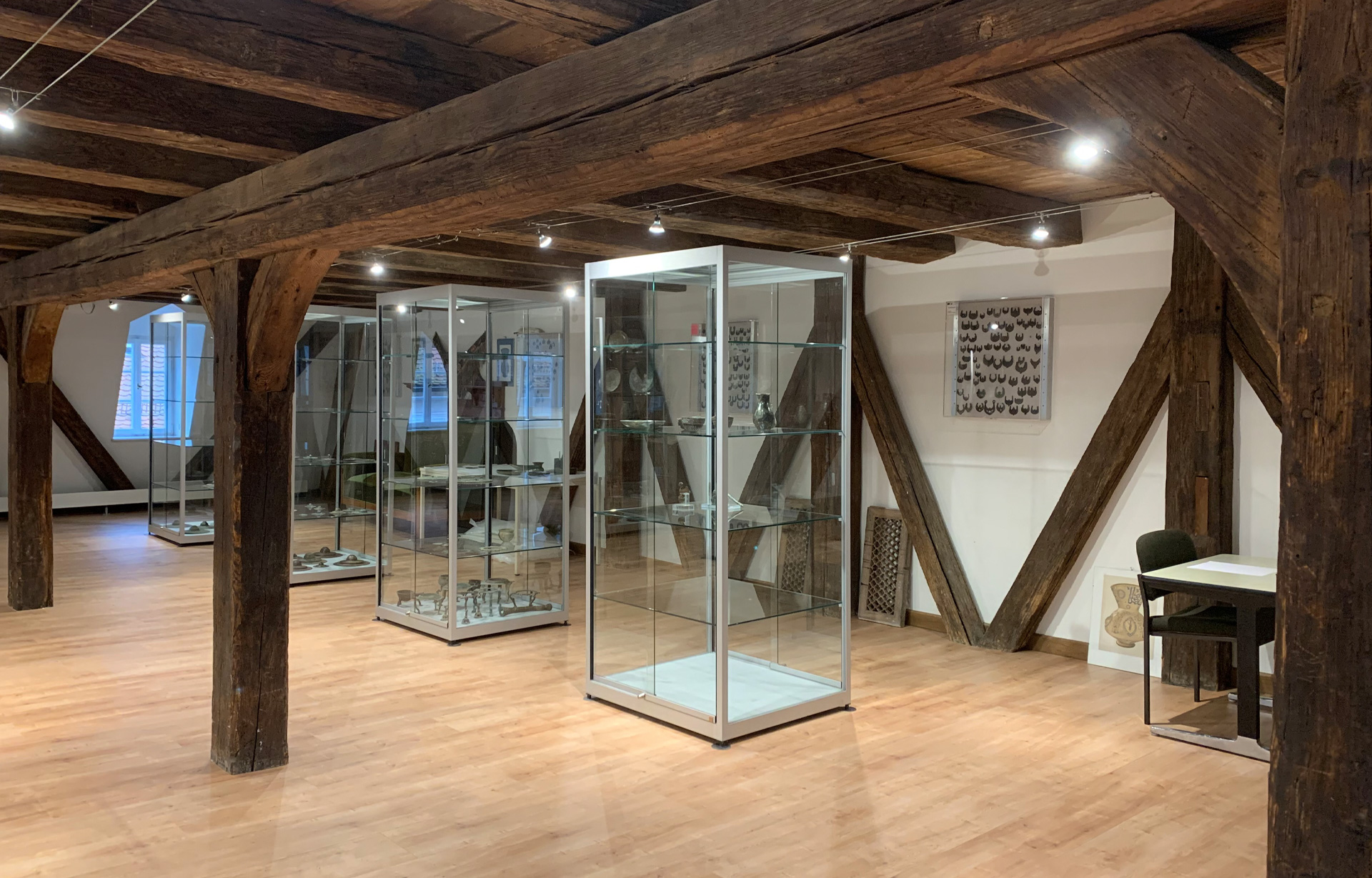
In 2007, the museum was extended to include the 2nd floor and the attic floors of the neighboring property at Austraße 27. Around 1780, both houses belonged to the master milker Johann Schmitt as a flour store. The four-storey attic of the Austr. 27 was used as a flour store at the time. The cellar rooms were also once connected via a passageway that is now walled up. The attics are now used as a display depot.

